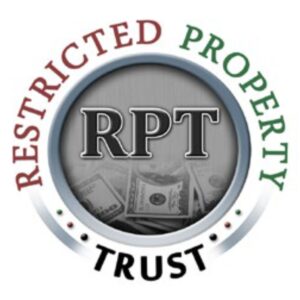Safeguarding Your Assets: A Guide to Restricted Property Trusts
Safeguarding Your Assets: A Guide to Restricted Property Trusts
Blog Article

In the realm of wealth management, securing assets from possible claims and ensuring that they are secured for the future is a primary concern for numerous high-net-worth persons. One of the most innovative tools that is gaining popularity in asset protection strategies includes the Restricted Property Trust. Contrary to traditional trusts RPTs offer a unique blend of flexibility and security, making them a compelling alternative for wealth protection.
What is a Restricted Property Trust?
The Restricted Property Trust is a specialized trust designed to protect assets from creditors, while creating a structure for distributing and managing wealth. Unlike standard trusts, RPTs require the transfer of funds or assets in trust, where they are shielded against legal claims as well as possible liability. This means that, in the event of a lawsuit or any other financial threat the assets of the RPT are generally protected from being liquidated or seized.
How Do Restricted Property Trusts Work?
The purpose for an RPT is quite simple. The property owner transfers his assets into an RPT, and it operates under a set of established rules and limitations. The rules typically contain stipulations on how the assets can be used, managed and distributed. Since the trust is administered by trustees, the assets are effectively kept separate from the personal assets of the owner which provides a buffer against claims from creditors and legal actions.
Advantages of Restricted Property Trusts
1. Increased asset protection: A main benefit of an RPT its ability to shield assets from creditors and legal disputes. When assets are placed in trusts with limits, they are protected from claims against the individual.
2. Flexibility in Management: RPTs permit detailed control of how assets are managed, and distributed. This means that the trust can be structured to meet specific needs or goals, such as ensuring future generations are provided for or donating to charitable causes.
3. Tax advantages: In a few cases, assets placed in an RPT may be eligible for tax-favored treatment. Based on the location and the particulars of trusts, there could be opportunities for tax deferral or reduction.
4. The RPTs in estate planning could play a significant role in estate planning by ensuring that assets are distributed according to the grantor's wishes while minimising estate taxes and avoiding probate.
Potential Drawbacks
While RPTs provide significant advantages, they are not without possible drawbacks. The process of setting up and managing an RPT may be a daunting task and could result in higher expenses in comparison to other methods of asset protection. Additionally, the specific restrictions imposed on the trust assets can limit the freedom regarding how they are used.
Conclusion
Restricted Property Trusts provide an efficient and modern approach to shielding wealth from potential dangers. Utilizing the unique structure of RPTs individuals can achieve a high amount of asset protection while retaining control over how their wealth is handled and distributed. If you're looking to safeguard their assets and enhance their estate planning, exploring the advantages that come with Restricted Property Trust is a sensible step towards a an effective wealth management.
Report this page